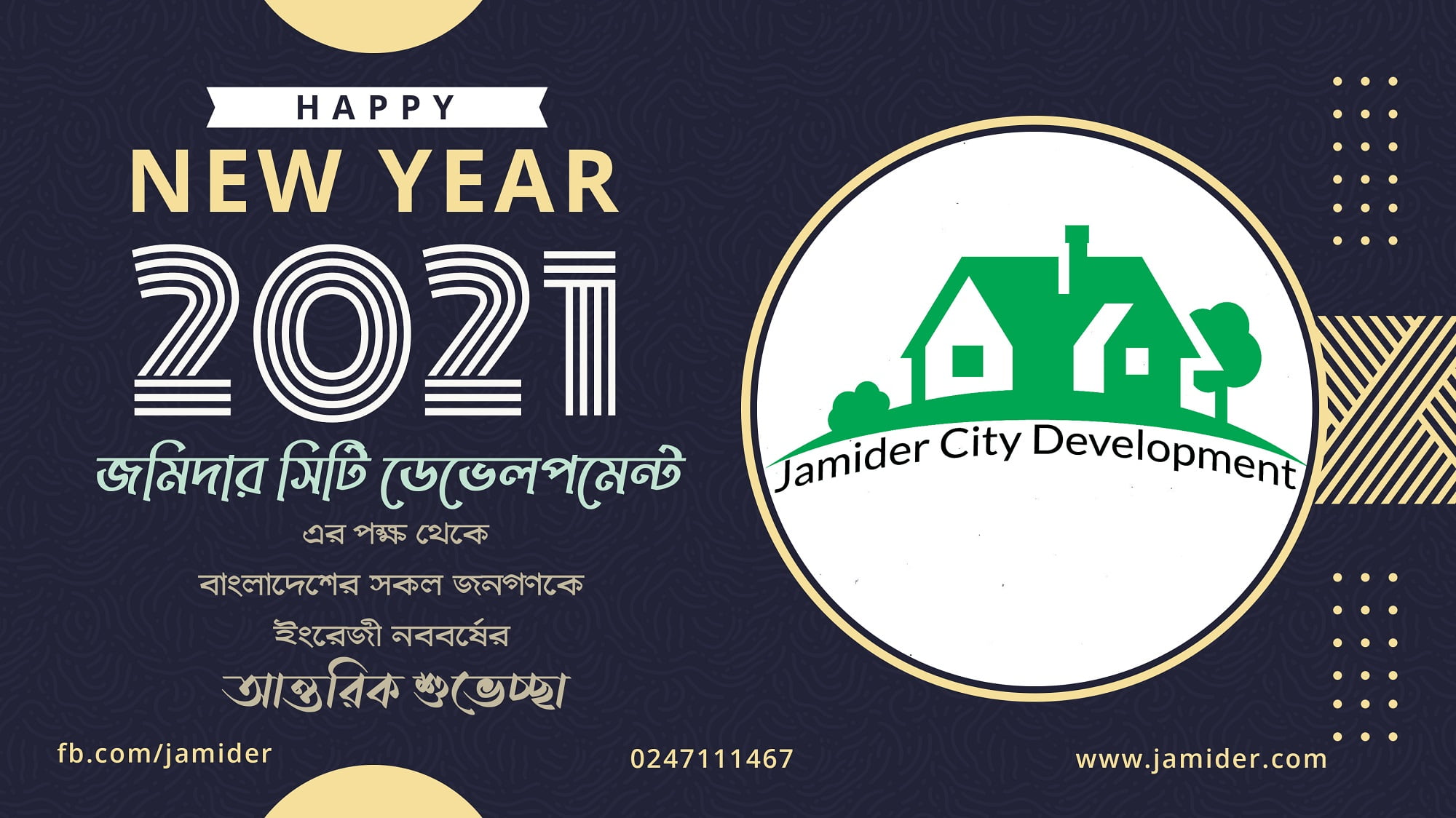The construction of flats served as the impetus for the beginning of Bangladesh’s foray into the real estate market in the 1970s, and the country’s market value has been on the rise ever since. One of the most important factors contributing to overall economic expansion is the construction of apartment buildings, which has recently broadened its scope to include the creation of model villages, shopping malls, and other commercial facilities. The sector has had a substantial impact on the development of new jobs, and it directly provides around 5.0 million Bangladeshi taka to the yearly revenue of the government each year.
As a result of rapid population growth, Dhaka and Chittagong have emerged as two of the most populated metropolitan cities in Bangladesh, drawing the bulk of the country’s construction projects. According to the Bangladesh Bank, the demand for home finance would increase in the fiscal year 2020–21 compared to the previous year. At the end of June 2020, private banks will hold the lion’s share of outstanding housing loans. This sector’s expansion was slowed by the nationwide lockdown that took place a year ago; nevertheless, with the massive aid provided by the government, it is gradually making a comeback. In addition to that, the abundant liquidity that resulted in a reduction of interest rates within the banking sector had a big influence on this front as well.
The flourishing real estate industry has been presented with a multitude of new prospects, one of which is the expansion of new and vast regions located outside of Dhaka, which calls for the creation of urban infrastructure. They will get the chance to examine places that are not considered to be the mainstream as a result of the creation of new roads and railroads. The rising number of people who fall into the lower middle class has led to a rise in the demand for houses in that class. In addition to the help from the government that was discussed before, considerable contributions are also being made by banks and NBFIs.
Regrettably, the pandemic is not the only barrier that the real estate market must contend with at the present time. The displeasure of customers may sometimes be traced back to poor management on the part of a few developers. The situation is made much worse by the fact that development authorities do not work together, and urban planning is a complete mess. As a consequence of this, the government and the various players in the sector are going to have to collaborate in order to fulfill the needs of the people. In addition, the real estate industry should begin to emphasize low-cost and affordable housing in order to better accommodate the influx of families with incomes in the lower middle class.
Contribution to the functioning of the economy
The rapid economic development of Bangladesh, along with increased housing demand, an expanding middle class, and increasing per-capita income, are driving the rapid expansion of the country’s real estate sector. In the 1970s, there were just five registered enterprises when everything got started. In the 1980s, city residents in Bangladesh’s middle class embraced apartment building, and by the late 1980s, it had become a regular practice for individuals of all economic levels. In recent years, apartment development has grown more popular in Bangladesh. At the time, the idea of real estate is broadening to include not just the construction of private dwellings but also the building of model towns, shopping malls, important infrastructure, and commercial settings with the intention of generating substantial margins of profit. In the late 1980s, there were a total of 42 of these developers working in Dhaka. In 2013, there were around 800 businesses; however, there are now 1073 registered companies engaging in this industry. Of these 1073 companies, 879 are enrolled corporations with the Real Estate and Housing Association of Bangladesh (REHAB). There has been a noticeable upswing in the quality of the real estate market in Chittagong over the course of the last two decades. The demand for apartments in Chittagong was a contributor to the overall demand for items related to real estate. The whole real estate industry is impacted significantly by the activities of a sizeable number of unregistered businesses.
When it comes to ensuring economic stability, the housing sector is very essential. Because of the considerable multiplier effects that it has on economic activity, it is a key contributor to the expansion of the economy. It is responsible for 7.96% of the total GDP. In addition, the industry was beneficial to the economy of the country as a whole because to the linkage industries that it fostered. These linkage industries included steel bars, cement, brick, sand, ceramic tile, paint, and other types of fittings and fixtures. According to the figures compiled by REHAB, this industry and the sectors closely related to it contributed around 12% to the total GDP of the country.
It is one of the most important employment generators, ranking third after the agricultural and ready-made clothing industries. The leading real estate development companies in Bangladesh have played a role in increasing the demand for products and services in a variety of ancillary industries, including but not limited to steel, cement, tiles, sanitary ware, cable, electric ware, paint, glass, aluminum, brick, construction materials, and consumer durables, amongst others. The most recent population census indicated that the total demand for housing would be 0.8 million units in the year 2020 and 1.14 million units in the year 2030. In addition, every year, this sector is directly responsible for contributing around 5.0 billion BDT worth of revenue to the government (through VAT, registration fees, utility fees, and so on).
Aspects of the Pandemic Caused by COVID-19 That Affect the Real Estate Sector
When the government instituted a two-month nationwide lockdown between March 26 and May 30, 2020, there was little demand for apartments since people did not make such significant investments during a time of crisis. The lockdown lasted for a total of two months. As a direct consequence of this, all home projects came to a standstill. As a result of the lockdown, construction workers and other staff were ordered to return home, which caused around 6,000 projects that were being worked on by REHAB members to be placed on hold. Because of the severe lack of available funds, many customers were unable to make their payments on time, and as a direct consequence of this situation, housing entrepreneurs were especially anxious about how they would pay their employees.
After the disaster caused by COVID-19, the real estate industry experienced a resurgence as a result of the government’s decision to allow the use of untaxed income to purchase property, land, and apartments without requiring the buyer to account for the source of the funds in the budget for the current fiscal year. In addition, according to players in the business, financial institutions such as banks and non-bank financial institutions (NBFIs) are giving home loans with very low interest rates of less than 9 percent as a secured investment for the lenders. As a direct consequence of this, a greater variety of buyers now have the opportunity to own real estate in Dhaka. Because of the lockout, investors in real estate are now paying greater attention to existing projects before they are finished. This is because the projects are already behind schedule by one year. Consumers have access to an increasing number of flats that are finished and ready for purchase on a daily basis.
The unanticipated increase in demand that occurred during the outbreak was caused by a number of significant factors. People were afraid, which was the primary motivating factor behind their desire to make certain that their heirs had a stable residence in the city. Due to the fact that they were unable to invest in faraway countries or transfer money to other countries, several individuals decided to put their money in real estate instead. In addition, the rise may be attributed to the decision made by the government to let untaxed capital to flow into the real estate market. We are anticipating that demand will be quite strong once again this year. On the other hand, existing customers will continue to suffer as a consequence of the effect that the pandemic will have on their income.
Following COVID-19, there are certain emerging tendencies in the real estate industry.
The real estate business discovered a fresh source of optimism as the crisis brought on by COVID-19 started to improve. The market saw a number of emerging trends and wasted no time in seizing the opportunity presented to it. There is a growing interest among residents of Dhaka in purchasing a brand-new apartment. As soon as the negative trend caused by the pandemic started to reverse, the industry began to make a strong comeback. The COVID-19 experience has the potential to bring about long-term behavioral changes, which in turn may affect the market for other types of real estate assets, such as homes used for hospitality and rents for shorter periods of time. When purchasing a property in this post-pandemic age, parents are taking their children’s requirements into consideration. Even a temporary reduction in business travel might have long-term repercussions if other communication methods, such as video conferencing, are shown to be acceptable or even superior. The near-shoring of supply chains may result in an even greater reduction in the demand for international business travel, while consumers who are nervous about traveling abroad may switch their leisure vacation to local destinations instead. Following the period of COVID-19, the real estate business in Bangladesh has seen several new trends emerge, which are as follows:
Studio apartments are becoming more popular in today’s urban landscape.
Studio apartments are comprised of a single room that is either 250 square feet or 1,000 square feet in size and feature a bedroom, dining area, tiny kitchenette, and accompanying facilities. As a result, studio apartments are the ideal living space for single city inhabitants as well as small families.
The government is making an effort to protect the environment by mandating the use of hollow bricks.
Md. Shahab Uddin, the Minister of Environment, Forests, and Climate Change, has announced that the production of hollow bricks and blocks, as well as their use, would be made gradually obligatory throughout the nation by the year 2025 in order to reduce the amount of pollutants released into the air. Bricks that are hollow have a number of holes in them. It has been shown that these bricks are much more beneficial than the conventional bricks. Bricks that are hollow are not only resistant to fire but also much safer than conventional bricks.
The use of steel structures in urban settings is becoming more common.
Prefabricated steel buildings are becoming more common in urban areas as a result of the growing preference among businesses for the convenience and security offered by this kind of construction. This kind of building takes less time to put up and is better able to resist the effects of natural disasters like earthquakes.
After COVID-19, there Will Be New Opportunities in the Real Estate Industry
When seen through the lens of history, this industry has been present in the realm of corporations not long after our nation attained its freedom. The country of Bangladesh is still going to go through a great deal of transition. A recent study predicted that by the year 2030, Bangladesh’s economy would be the 28th biggest in the world. We expect that during the next 50 years, there will be an investment of at least USD 700 billion only in housing. These people have the ability to become consumers if the right product and positioning are used, and it looks that there is huge potential not just in Dhaka but also in the surrounding areas.
Participants in the market are following the examples set by international leaders.
We may be able to identify some amazing approaches that have been utilized to tackle the public’s real estate issue if we take samples from a variety of nations and examine their experiences.
The housing problem in Singapore has been successfully resolved to a greater extent than in any other country. Because Singaporeans are allowed to take out loans against their pension funds as soon as they begin working, the country has the highest homeownership rate in the world. Even those with modest incomes have the opportunity to buy their own homes by obtaining financing in this manner.
In addition to this, Japan has a proven track record of providing its citizens with affordable housing options. The city has placed an emphasis over the decades on vertical expansion, which has assisted in keeping property costs within reach.
Millions of New York City residents were able to breathe a sigh of relief when the city’s officials instituted a policy known as rent control, which set maximum rates for all homes. In order to be eligible for rent control, a resident has to be at least 18 years old.
The Indonesian government passed law on public housing savings in the previous year, which is intended to help workers save money for the purchase, construction, or repair of their first home. Everyone who is employed in a formal capacity and who earns at least the minimum wage is required to put away three percent of their income (2.5 percent from employees and 0.5 percent from employers) in a housing savings account.
The Emergence of New Possibilities
Given the size of the market, the real estate industry in Bangladesh has a wealth of opportunities, including the following:
migrating into new regions like as Purbachal, Bosila, Keranigonj, and the outskirts of Dhaka; these are all open areas that have not yet been built with urban infrastructure. This is something that can be accomplished if the government works to encourage reputable educational institutions, such as colleges and universities, to provide specialized commuter facilities and public transportation options, such as intra-city train service. Aside from that, a previously established neighborhood like Dhanmondi is now running a promotion that provides discounts to new clients.
The Bangladeshi government has initiated a significant number of road and highway development projects around the country. Since transportation is the primary demand for growth everywhere, and since the government is gradually attempting to alleviate this need, real estate businesses should concentrate on delivering new developments to different cities in Bangladesh. This is because transportation is the primary demand for growth everywhere.
The rate of urbanization that occurs each year now is between 5 and 6 percent. Within the next several years, around forty percent of the world’s population will call an urban location their home. Only forty percent of Dhaka’s population has access to housing that meets or exceeds minimum requirements. As a consequence of the examination into comparisons, industry professionals are of the opinion that the current upward trend in housing demand will last for a considerable amount of time.
The focus should be on providing lower-middle-class individuals with alternate housing options that are also affordable. Some of the most desirable neighborhoods in the world may be found in Dhaka. As more people enter this socioeconomic level, there will be an increased demand for housing that is reasonably priced, which will provide a profitable business opportunity for private real estate companies.
At this time, around 68% of the population of Dhaka lives in rented accommodation. According to ICE Business Times, 82% of them have the opinion that their current rent is more than they are able to pay for it. If real estate companies are able to offer apartments at reasonable prices, there is the possibility of a market for this category being created for them.
In the budget for the current fiscal year, the government gave its blessing to the use of untaxed income for the purpose of purchasing real estate, including apartments and land. A total of around BDT 3,500 crore worth of untaxed money was reportedly invested in the business over the course of the most recent six months, as stated by the president of REHAB. As a direct consequence of this, increased levels of investment will be poured into the real estate market in the not too distant future.
More and more financial organizations, including banks and non-bank financial institutions (NBFIs), are making low-interest mortgage loans available to consumers. As a direct consequence of this, an increased number of people will be considering purchasing flats. Because of this, there has already been a discernible rise in the level of interest shown in purchasing apartments.
If there is a reduction in the fees associated with registering a property, there will be an increase in the number of people purchasing units.
The Obstacles Facing the Real Estate Market in the Wake of COVID-19
Real estate investments have, over the course of the past few decades, delivered consistent cash flow and returns that have outperformed traditional sources of income, such as corporate debt, with only a minor increase in risk. This has been the case despite the fact that there has been a slight increase in risk. This reality, however, has evolved ever since the virus outbreak, and real estate players have been significantly affected at every stage of the value chain as a result. Service providers are making efforts to protect the health of their employees as well as the customers they serve. A significant number of developers are unable to get the necessary approvals, which leads to construction bottlenecks, delays, and possibly lower rates of return. During this time, a large number of property owners and management companies are experiencing a significant decrease in their operational revenue, and nearly all of them are concerned about the number of tenants who will be unable to make their monthly lease payments. The words “concession” and “abatement” are the buzzwords of the day, and players are scurrying around trying to figure out who to apply to and how much they should apply for.
According to figures provided by the government, the city of Dhaka welcomes at least 1,418 new residents on a daily basis. At this point, there are 80,000 people living in one square kilometer of Dhaka’s territory. Comparatively, the average area per person in Mumbai is 32.3 square meters, Tokyo has 230.2 square meters, Shanghai has 167.6 square meters, and Delhi has 87.4 square meters. Dhaka’s average area per person is 12.5 square meters. The numbers are startling, and it is clear that Dhaka is not doing enough to accommodate the city’s growing population. Since many years ago, the real estate industry has been struggling to overcome a number of obstacles. The following is a description of the primary difficulties:
There is a lack of commitment on the part of certain real estate corporations as well as individual buyers. In addition, the real estate industry does not have a statutory framework to safeguard the interests of potential buyers.
Problems are often caused by the marketing methods used by some real estate and land development businesses. In recent years, unethical activity on the part of a number of firms, both newly established and long-established, has been brought to light by the publication of misleading advertisements for the sale of land and the construction of apartment complexes.
After the COVID-19 effect, real estate sector giants would reportedly need less time to get their businesses back up and running, as stated by experts in the field. On the other hand, those tier-2 and tier-3 developers have to evaluate their current state and have a conversation with their clients about the subsequent stages, such as whether or not there will be late handovers or if there will be any revisions to the project’s original goals.
A well-thought-out strategy for urbanization and financial incentives from the appropriate government agencies are not in place. A new urbanization plan is required, one that is comprehensive enough to incorporate sufficient amounts of infrastructure for the development of roads, educational and medical institutions, and utility infrastructure. If real estate businesses choose not to participate in these development activities, it will be more difficult for them to access new and expanding markets.
The multiple development organizations, which are comprised of 330 municipalities and 12 city corporations, are not able to collaborate effectively with one another.
The compensation package for workers in the real estate industry is subpar. As a consequence of this, the majority of real estate businesses, with the exception of a select few top-tier real estate organizations, are unable to hire skilled HR personnel.
The registration tax in Bangladesh has been reduced from 14 percent to 10 percent of the overall price of the flat, although it continues to be higher than in many other Asian countries. This is because the registration charge in Bangladesh is based on the total price of the flat.
In the not-too-distant future, one of the most pressing concerns will be how to keep the average interest rate on house loans for individual customers at a historically low level. People have been more inclined to take out loans to purchase assets as a result of historically low interest rates; but, if interest rates were to increase, the trend may reverse.
Conclusion
The real estate market provides a wide range of potential opportunities for financial investment. However, growth can only be achieved through the concerted efforts of both the private sector and the public sector. The government has to put pressure on developers to provide housing that is reasonably priced and accessible to the general population. The government of Bangladesh has to give a policy direction for the real estate business that is both practical and focused on the long term in order to encourage investment and development in the sector. Spreading awareness of the “affordable housing” notion is necessary in order to ensure that all people enjoy at least some level of acceptable quality of life. Without sufficient housing, we will be unable to cultivate a skilled labor force that is able to make a positive contribution to the economy of the country. Given the complex nature of housing, it should come as no surprise that a single or even a few of isolated attempts will not be sufficient to solve the overall housing issue. Collaboration between the Bangladeshi government and private development companies is essential if the country’s real estate market is to have a prosperous future.




